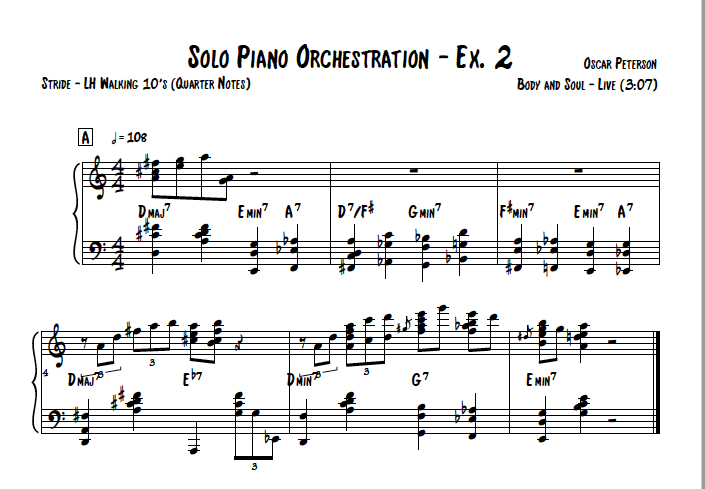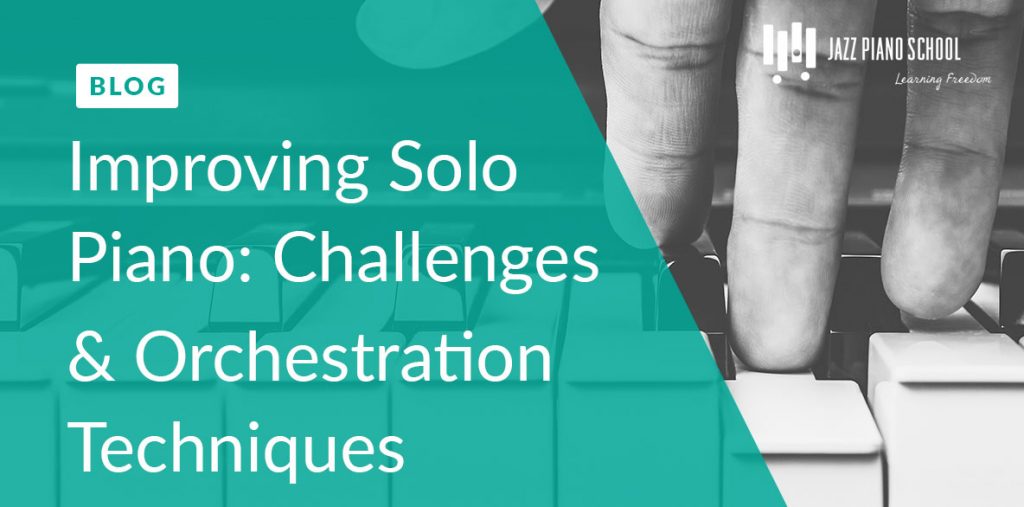While playing solo piano can be incredibly liberating, it can also be an incredibly daunting task with all of the melodic, harmonic, and rhythmic onus on you. Some of the main challenges of solo piano include:
-
-
- Establishing a 3rd Layer of Accompaniment that’s independent of the melody and the bass with only 2 hands.
- This is usually accomplished by the inner fingers of each hand, while outer fingers (the pinkies) are usually fulfilling the duties of bass and melody.
- Having a strong enough sense of internal time to be able to groove in the absence of bass & drums.
- This can be accomplished by practicing with the metronome; for example, try playing with the metronome on beats 2 & 4.
- Architecture of Arrangement
- combining and weaving between various orchestration techniques in a spontaneous, natural, flowing, and cohesive fashion to achieve a fully orchestrated sound out of the piano
- Establishing a 3rd Layer of Accompaniment that’s independent of the melody and the bass with only 2 hands.
-
A pre-requisite to a successful solo piano performance is: knowing the tune inside and out. Once you are comfortable with the tune, you can explore various orchestration techniques, which include:
-
-
-
- LH play things to compliment the RH (counterpoint)
- Modified Stride
- Walking 10’s (Quarter Notes)
- Alternating between shells & chord with rhythmic variance
- Walking Bass
- Sparse LH shells & rhythmic jabs
- Rubato/Out of Time
-
-
Here are some examples of a few of these orchestration techniques used in context:



When to revert to each orchestration technique also depends on the tempo and style of the tune you’re playing. For example on a ballad you might be inclined to play rubato/out of time than on a medium tune, where you’d be much more inclined to walk a bassline than on an up-tempo tune, where you would be more inclined to play sparse LH shells and rhythmic jabs.
Check out some masters of solo piano – Fred Hersch, Oscar Peterson, Kenny Barron, Bill Evans, and Mulgrew Miller, among others – to get familiar with the architecture of their arrangements and the various orchestrations they employ.
Recommended Listening: “Mulgrew Miller” Solo (2010), “Oscar Peterson” Solo (1972), “Fred Hersch” Solo (2015),“Kenny Barron” Live at Maybeck Recital Hall Volume 10 (1990), “Bill Evans” Alone (1968)
Bijan Taghavi is a pianist, composer, and educator currently based in New York, NY. For more information visit http://www.BijanJazz.com.













